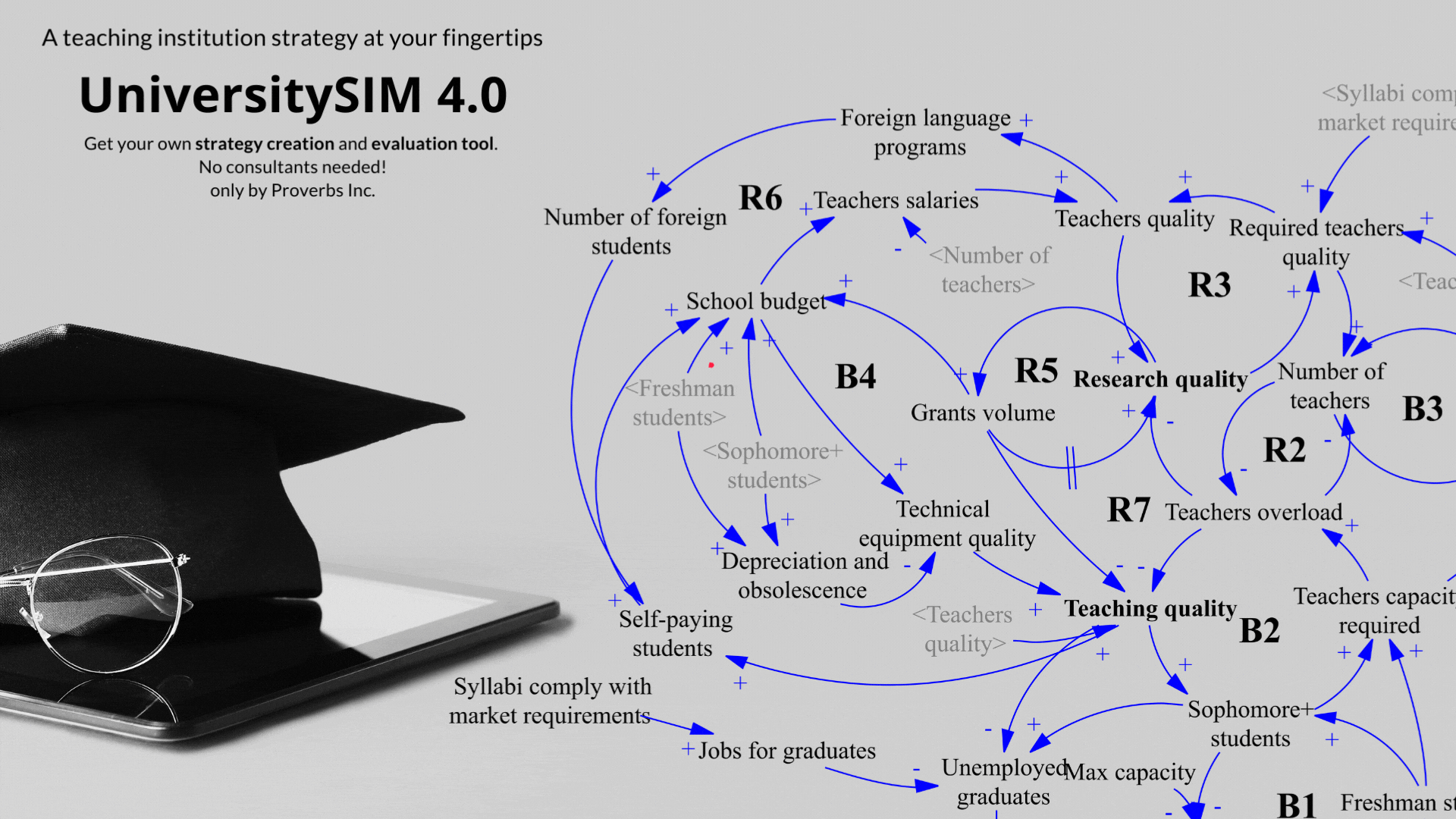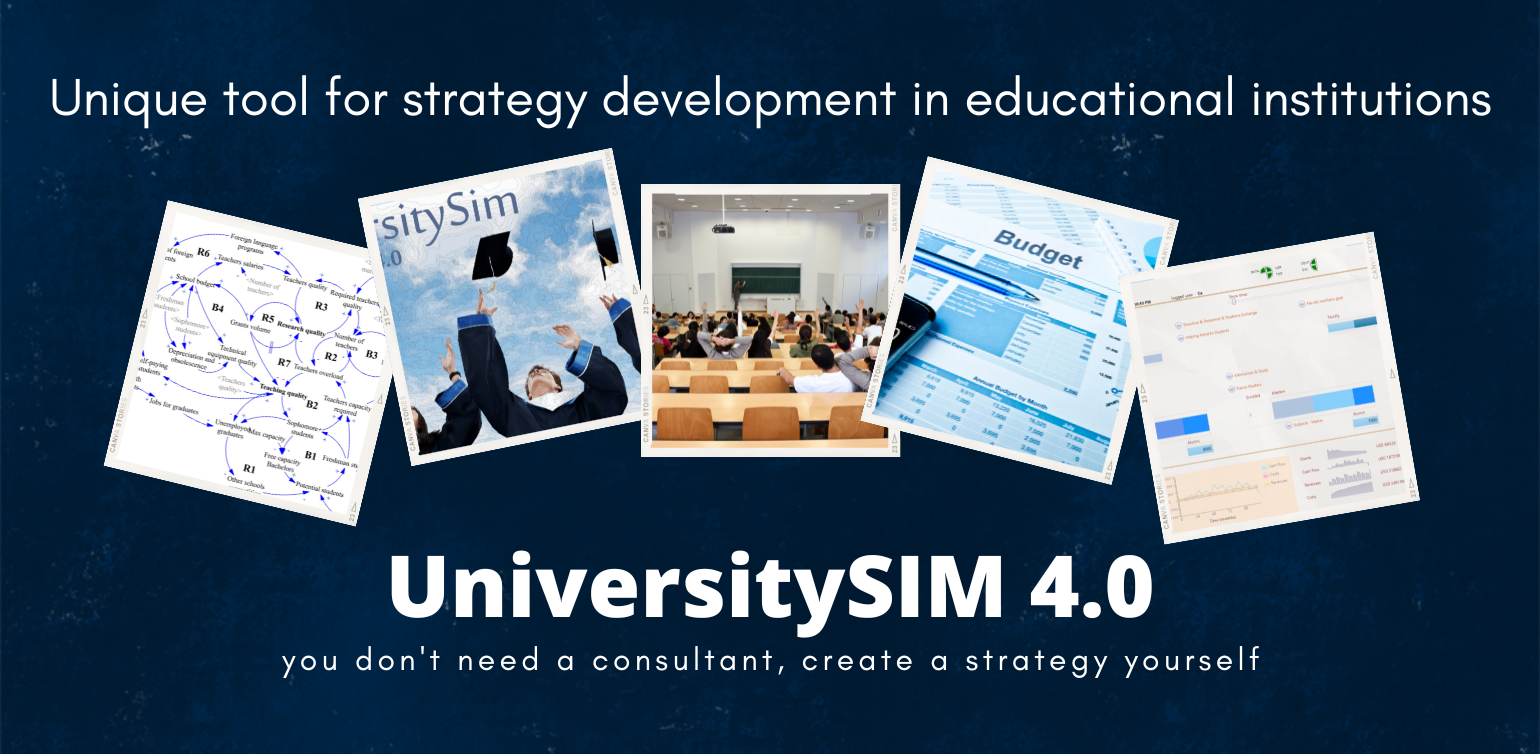
UniversitySIM
- Find out how to create and meet the demand for education
- Create a curriculum and test if it fits with staff
- Determine staffing requirements, costs and matching expertise to instructional subjects
- Ensure financial stability by setting tuition and fees appropriately
- Create an environment for students to successfully complete their studies
- Find a balance between research and teaching requirements
- Secure the necessary volume of grants and monitor the contribution of individual researchers

This is just the opening screen...
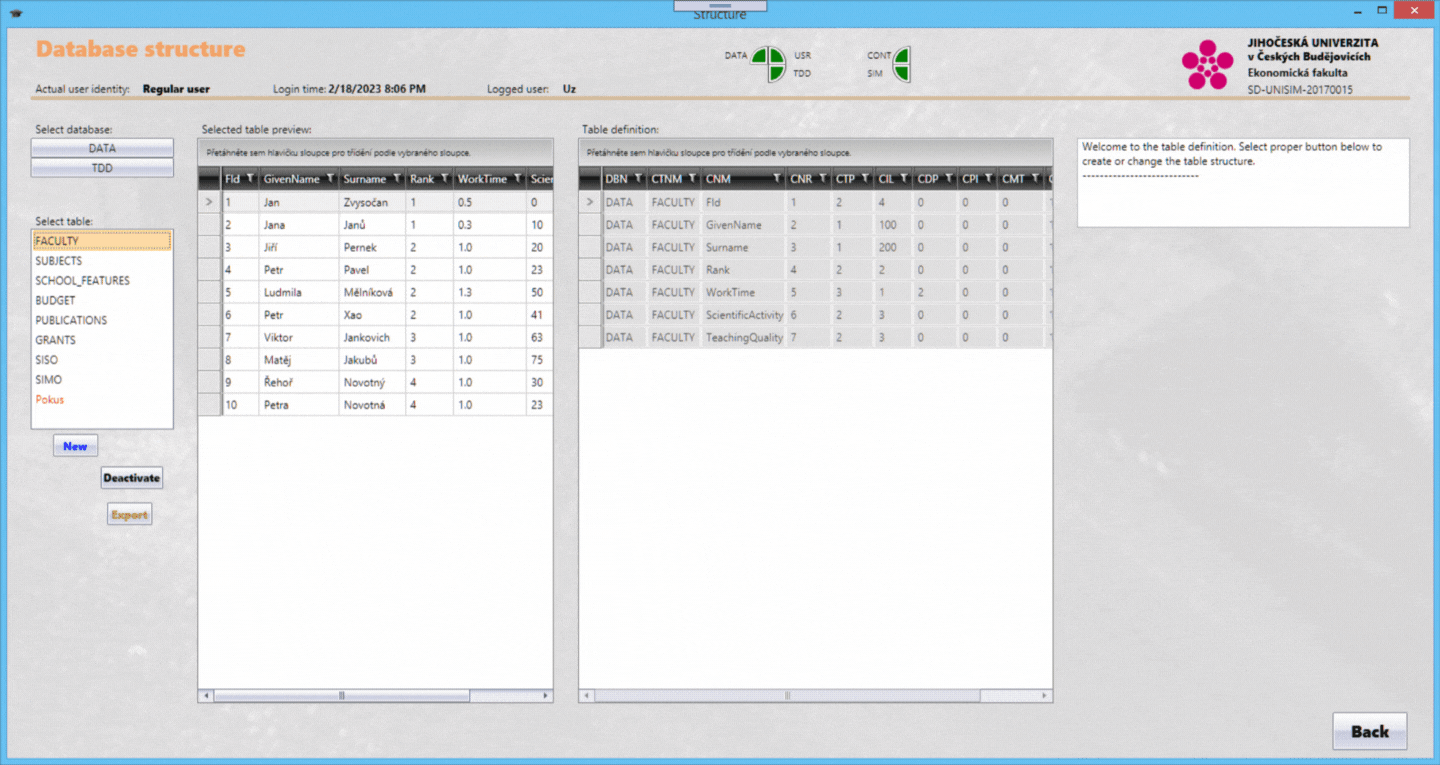
UniversitySIM is fully customizable, you can change the database structure from the ground up, but you don't have to...
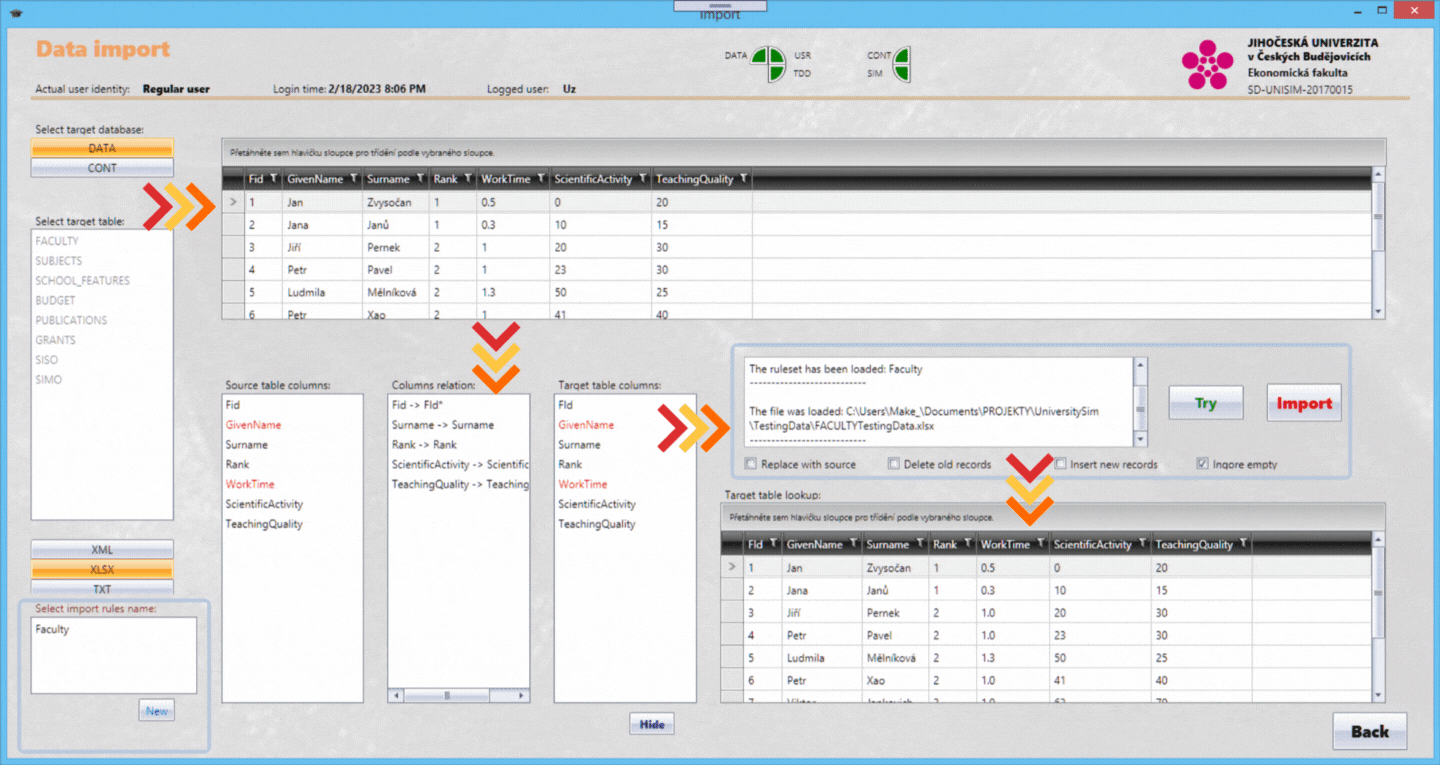
Import data from txt, xlsx or xml files, no need to modify the input files structure, you decide what and where UniversitySIM should save...
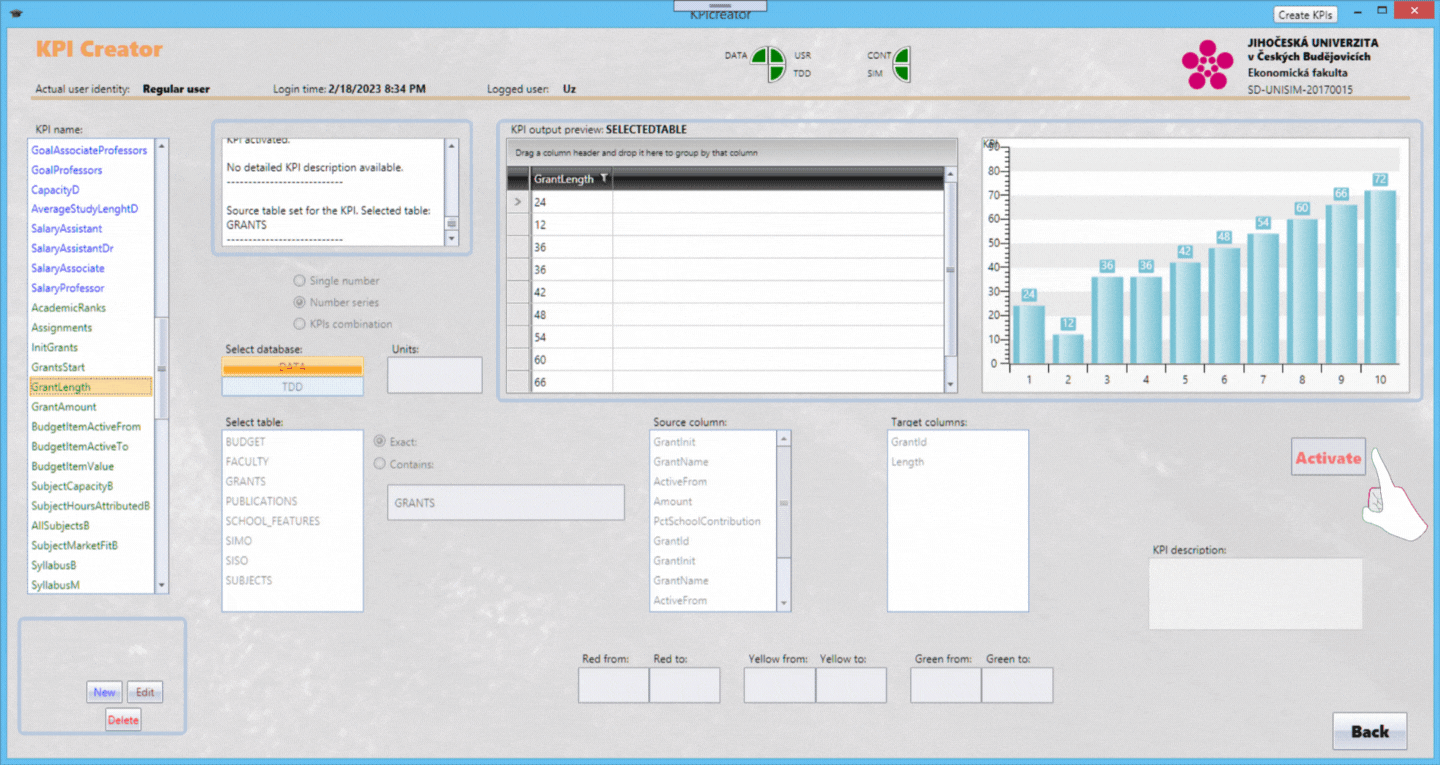
From the data structure you create parameters that will feed the simulator...
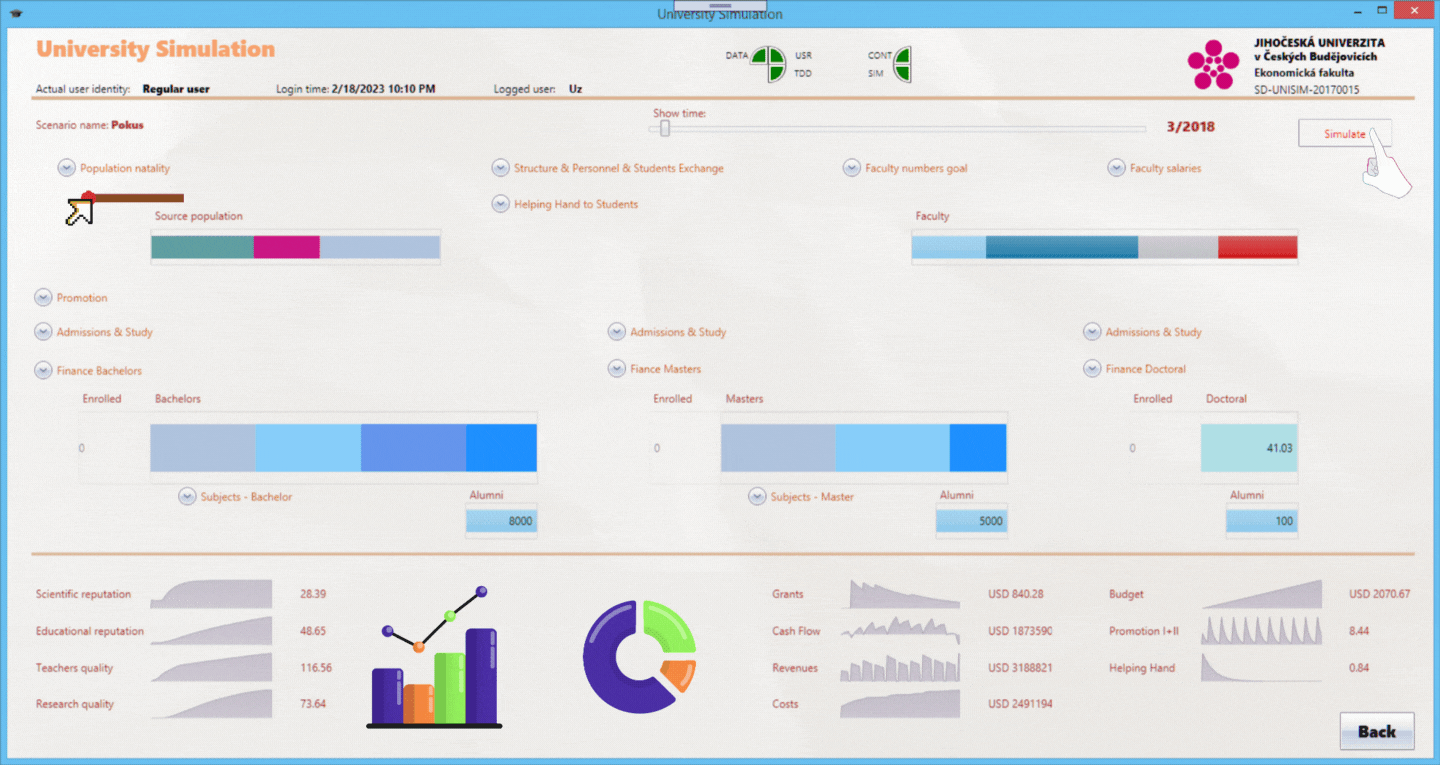
Set input parameters, from population, to admissions, to finance, to research, to grants, to graduate employability, and track their immediate impact on all KPIs over the entire simulated period...
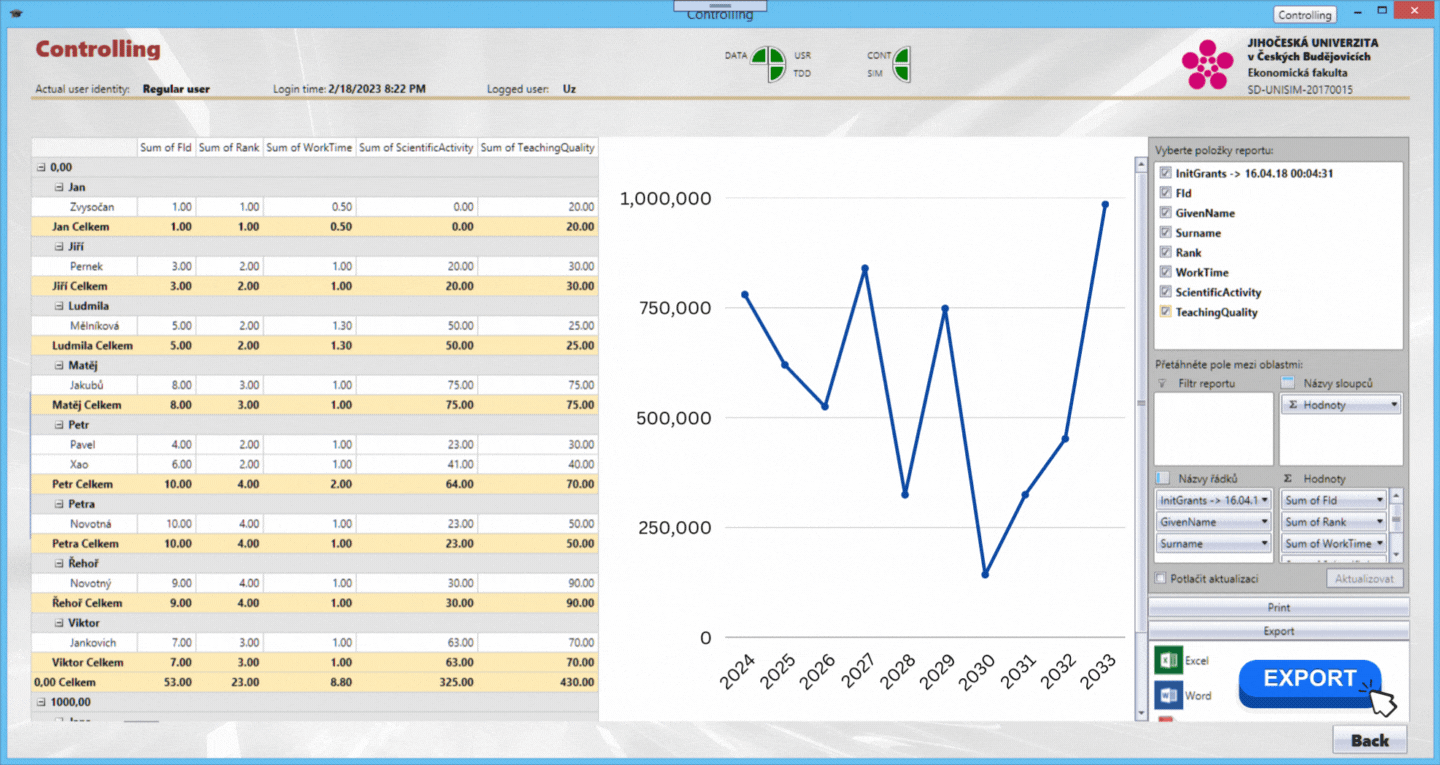
The simulation output can be processed in the built-in spreadsheet, the controlling screen allows creating pivot tables and exporting them to all common formats...
UniversitySIM is available in a commercial version and we also supply an academic version, which is designed for teaching students on economics degree programs.



